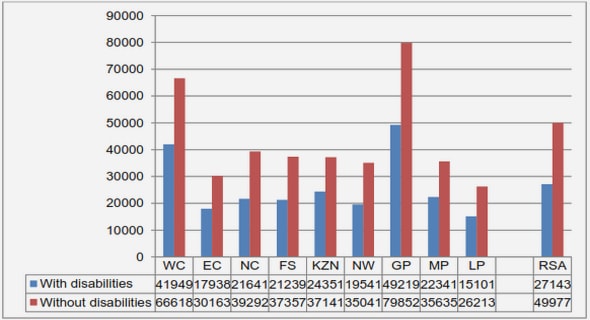(Downloads - 0)
For more info about our services contact : help@bestpfe.com
Table of contents
CHAPTER 1 GENERAL INTRODUCTION
1.1 Cell and cellular microenvironment
1.1.1 Cell and cell cytoskeleton
1.1.2 Cellular microenvironment
1.1.2.1 Extracellular matrix
1.1.2.2 Cell-ECM interaction
1.1.2.3 Cell-cell interaction
1.2 Cell-substrate interaction from mechanotransduction aspect
1.2.1 Mechanotransduction
1.2.2 Substrate stiffness
1.2.3 Substrate topography
1.2.4 2D versus 3D culture
1.3 Technology of induced pluripotent stem cells
1.3.1 The induced pluripotent stem cells
1.3.2 Differentiation of induced pluripotent stem cells
1.3.3.1 Differentiation via EB formation
1.3.3.2 Substrate for stem cell differentiation
1.4 Scaffold engineering
1.4.1 Biomaterials
1.4.2 Fabrication techniques
1.4.3 State of the art and future directions
1.5 Research objectives of this work
References
CHAPTER 2 MICRO- AND NANO-FABRICATION TECHNIQUES
2.1 Introduction
2.2 UV photolithography
2.2.1 General principles
2.2.2 Mask design and exposure
2.2.3 Photoresist
2.2.4 UV expose and development
2.3 Soft photolithography
2.3.1 Mechanism and fabrication process
2.3.2 Micro-contact printing (μCP)
2.3.3 Replica molding
2.4 Electrospinning
2.4.1 Principles
2.4.2 Effects of various parameters on electrospinning
2.4.2.1 Applied voltage
2.4.2.2 Flow rate and tip to collector distance
2.4.2.3 Alignment, collector-pattern and 3D structure
2.5 Conclusion
Reference
CHAPTER 3 ELONGATION AND CELL MIGRATION ON DENSE ELASTOMER PILLARS WITH STIFFNESS GRADIENT
3.1 Introduction and motivation
3.2 Materials and methods
3.2.1 Materials
3.2.2 Fabrication of the substrate
3.2.3 Microfluidic device integration
3.2.4 Cell culture
3.2.5 Immunocytochemistry
3.2.6 Imaging and statistical analysis
3.3 Results and discussion
3.3.1 Fabrication of the micropillar substrate
3.3.2 Rigidity of the micropillar substrates
3.3.3 Cell motility and cell migration
3.3.4 Cell morphology and cell proliferation
3.3.5 Complex stiffness map
3.4 Conclusion
References
CHAPTER 4 NARROWLY SPACED MONOLAYER NANOFIBERS FOR THREE-DIMENSIONAL CELL HANDLING
4.1 Introduction and motivation
4.2 Materials and methods
4.2.1 Materials
4.2.2 Fabrication of tri-layer scaffold
4.2.2.1 PDMS mold fabrication
4.2.2.2 Aspiration-assisted PEGDA frame production and ring mounting
4.2.2.3 Electrospinning nanofibers
4.2.3 Cell culture
4.2.4 Immunocytochemistry
4.2.5 SEM observation
4.2.6 Live/dead assay
4.2.7 Cell proliferation
4.3 Results
4.3.1 Tri-layer scaffold formation
4.3.1.1 Frame pattern and size
4.3.1.2 Frame thickness
4.3.1.3 Materials for electrospinning
4.3.1.4 Nanofiber density
4.3.2 Cell attachment and spreading
4.3.3 Cell viability
4.3.4 Cell morphology and 3D cell culture
4.3.5 Cell migration
4.3.5.1 Top to bottom migration
4.3.5.2 Bottom to top migration
4.3.5.3 Migration on thick scaffold
4.3.6 Cell proliferation
4.4 Conclusion
References
CHAPTER 5 DIFFERENTIATION OF HUMAN INDUCED PLURIPOTENT STEM CELLS ON MICROPILLAR ARRAYS
5.1 Introduction
5.2 Materials and methods
5.2.1 Materials
5.2.2 Fabrication of elastomer micropillars
5.2.3 Fabrication of the PDMS stencil
5.2.4 hiPSCs culture
5.2.5 Scanning electron microscopy imaging
5.2.6 Immunocytochemistry
5.2.7 MTT assay
5.2.8 Intracellular Ca2+ transient assays
5.2.9 External electrical stimulation
5.3 Results
5.3.1 Sample characterization
5.3.1.1 SEM imaging
5.3.1.2 Effective stiffness of the elastomer pillars
5.3.3 Stencil assistant EBs formation
5.3.3.1 The effect of the substrate stiffness
5.3.3.2 The effect of cell seeding density
5.3.3.3 Pluripotency of hemisphere EBs
5.3.3.4 3D view of the EBs
5.3.4 Cardiac differentiation on micropillar substrates
5.3.4.1 Differentiation protocol
5.3.4.2 Immunostaining of differentiated cardiomyocytes
5.3.5 Beating behavior of differentiated cardiomyocytes
5.3.6 Impact of external electrical stimulation
5.4 Conclusion
References
CONCLUSION AND PERSPECTIVE
APPENDIX A A FACILE PHOTOLITHOGRAPHIC METHOD OF FABRICATING WAVY-LIKE PATTERNS
1 Introduction
2 Experiments
3 Results and discussion
3.1 Microwave and MLAs patterns
3.2 Rice leaf-like structure and the hydrophobic property
4 Conclusion
Reference
APPENDIX B FRENCH SUMMARY
ABBREVIATION LIST
PUBLICATION LIST



